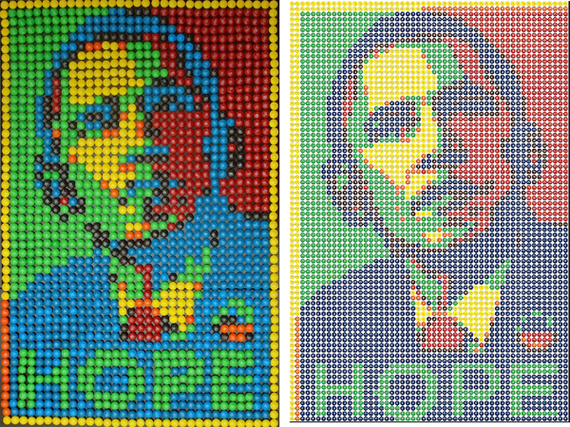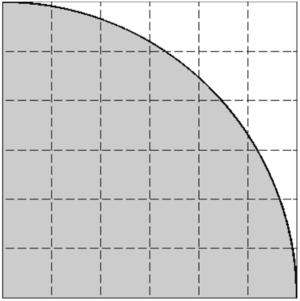It's summer -- fireflies, cook-outs, swimming pools and lazy afternoons. This next school year seems to be at the end of a tunnel that I haven't even looked to where it might end. It can be hard to believe that only weeks ago, kids were finishing schools years, taking tests and demonstrating their year-long learning. Today, in the midst of summer's slumber, many kids might struggle with content they aced on those tests only weeks ago.
The RAND corporation in its 2011 report on summer learning loss stated that many children and youth lose an average of a month of learning during the summer. The issue is of national interest. In 2010, President Obama noted on NBC's Today Show how students lose a lot of what they learn during the school year. Earlier that same year, First Lady Michelle Obama launched "United We Serve: Let's Read, Let's Move," a program that encourages actions to reduce the summer reading gap.
Summer plays an important role in creating memories for many families with vacations, day trips, and sleepovers. This is, indeed, one place where we can curb learning loss -- as families. Parents model learning outside of school and, as possible, making it fun. From Scrabble to Monopoly to Life, board games offer fun and inherent problem solving while incorporating words or numbers. And, we don't necessarily need to dust off those board games or look for lost pieces. Keith Devlin of Stanford University claims, with many agreeing, that video games may be one of the best ways to learn math. With many kids ready to grab their digital devices for the sake of summer learning, Devlin would be the first to note that learning is also tied to the content of the game.
While the digital world has much to offer, so do hands-on, interactive activities as a family. Carving a pumpkin on an iPhone or cutting cookies in holiday shapes in a web app won't hold the same memories as doing it for real. The benefit and need for families to interact together is part of the focus of the Family Fridays series at the National Museum of Mathematics, also called MoMath, in New York City.
About a week ago, I presented an interactive program "Curb Summer Learning Loss with Chocolate" at the museum. Families gathered to engage in math in a free program, as they do for every month through the generosity of Time Warner Cable's Connect a Million Minds program. Want a summer memory? that involves math? How about using chocolate? Math + Chocolate was a winning combination that Friday at MoMath. The program's largest turnout visited the museum that night, requiring overflow seating to be added to an already-full event.
The activities connected to topics in my book, Math Bytes: Google Bombs, Chocolate-Covered Pi, and Other Cool Bits in Computing, released this spring.
So, find some chocolate chips and let's begin before we eat our mathematical tools. First, let's create mathematical art with chocolate chips. In my book, I use M&Ms. For instance, below are mosaics of President Obama's Hope poster from the 2008 election.

On the left is a mosaic with real M&Ms that my family was most pleased to help disassemble! The M&M mosaic on the right was created with a computer program and is a higher resolution version, due to a grid that uses more squares compared to the mosaic on the left. To create a mosaic, you first break an image into a grid of squares that are at least the size of a chocolate chip. I've done this for an image of President Lincoln below, although the grid size (in this article) is too small to place a chocolate chip. Now, you are ready to make your mosaic. You go square by square. If the color in a square seems more black than white, place a milk chocolate chip. Else, leave it blank or place a white chocolate chip. When you've visited every square, you have your mosaic. Click the image of Lincoln below to download the handout from the Family Friday program. You can make your own mosaic of Lincoln. This activity, especially if you create the grid, works with measurement and estimation, both topics of the academic curriculum. To the right below is a picture of a mosaic being constructed at the Family Friday.
Mosaics can also motivate topics and ideas from Calculus. For example, consider the shaded region in the graph below. We'll again break the picture, in this case a quarter of a circle, into a grid of squares, each big enough to place an M&M. In the image, the squares are smaller than an M&M but they're bigger in the accompanying handout and can, indeed, fit the chocolatey treat.
 If we consider this to be a quarter of a circle with a radius of 1 unit, then the shaded region has an area of π/4. We are now ready to estimate or approximate this value with M&Ms and our grid of squares. We again visit every square. If the upper righthand corner of a square is part of the shaded region, place an M&M. Else, leave it blank. In the end, we note that the total picture is a square with sides of 1 unit by 1 unit. So, ratio of the shaded region to the total square is π/4 to 1 or π/4. We can estimate this ratio by the fraction number of M&Ms we placed by the total number of squares in the grid.
If we consider this to be a quarter of a circle with a radius of 1 unit, then the shaded region has an area of π/4. We are now ready to estimate or approximate this value with M&Ms and our grid of squares. We again visit every square. If the upper righthand corner of a square is part of the shaded region, place an M&M. Else, leave it blank. In the end, we note that the total picture is a square with sides of 1 unit by 1 unit. So, ratio of the shaded region to the total square is π/4 to 1 or π/4. We can estimate this ratio by the fraction number of M&Ms we placed by the total number of squares in the grid.
Let's try the 6 by 6 grid of squares seen above. Click the image above for a handout that you can use. I placed 22 M&Ms, which creates the estimate
π/4 ≈ 22/36.
Easy enough. But, now we'll use this estimate to approximate π, by computing
π ≈ 4(22/36) = 2.44.
So, our estimate is 2.44, and remember, π is about 3.1415. Unimpressed? Think about how to improve the estimate. One way is to get miniature M&Ms and shrink the size of the grid. This creates a higher resolution grid for the image. This results in a better approximation. For example, the Obama Hope mosaic on the right, earlier in the article, is closer to the original image than the mosaic on the left since it used more squares in its grid. This is precisely what Isaac Newton developed for Calculus. However, Newton was interested in the value of the estimate as you used more and more M&Ms. How many more? To infinity but not really beyond. Rather than go to infinity, how about moving to an 11 by 11 grid as seen below. How much better does the estimate get? Give it a try. Click either image below to download the accompanying handout. How much better of an estimate do you find? What other ways would you improve the estimate of the 6 by 6 or 11 by 11 grids? Some ideas to improve the approximations are contained in my book and I mentioned a couple at the Family Friday program. And, I needed only to ask for suggestions and new ideas were offered. What ideas do you and your friends and family have?
Want to work with fractions? Motivate Calculus? Or simply eat some chocolate? Buy some chocolate chips --- or raisins for a fruitier experience. And, take a math bite out of summer learning loss as a family.
